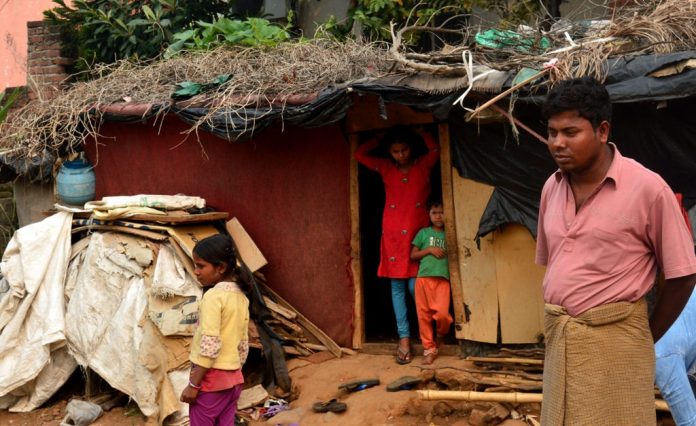According to reports, on Tuesday, March 13 a group of reporters from national news channels along with a local RTI activist had gone to cover a story on ‘illegal’ sim cards obtained by the Rohingya refugees, where they were harassed and beaten by a group of youths which the reporters alleged were from the Rohingya community.
The video of the incident which has gone viral on the social networking websites is being circulated as the alleged handiwork of the Rohingya, but a close look at the attackers make it clear that the assailants are locals and not Rohingyas.
“The media persons came here at 2 pm. While they were taking the video, a car belonging to a local hit the car of media persons leaving scratches. The argument among both the groups led to the physical assault. Those involved are local persons,” said Mohammad Ali, a Rohingya refugee labourer.
Another Rohingya, Mustafa Farooq, said that the latest incident is part of the already running campaign to defame and demonise the community, “The attackers were not Rohingya. Media persons are lying and defaming us. They are even saying that our women beat them despite the fact that there wasn’t even a single Rohingya woman on the road that time.”
Senior Superintendent of Police (SSP) Jammu, Vivek Gupta in an interaction with media persons has clearly said that they have made two arrests who were locals and not Rohingya.
“We have arrested two local youths, Mohammad Ashraf and Sher Mohammad. They (the media persons) have not been attacked by the Rohingya, I should be very clear on it,” Vivek said.
A section of mainstream and local media had started blaming the Rohingya for the incident despite the statement issued by the police chief absolving the refugees of the allegations. The Times of India ran the report with the headline, “Journalists attacked by suspected Rohingya refugees in Jammu, 2 held” while Jammu-based newspaper Daily Excelsior carried the news report with the headline, “Journalists attacked by Rohingyas, local youth”.
National news channel, Zee News also joined the chorus of blaming the attack on Rohingyas. It spent 6 minutes and 23 seconds to convince its audience that the attack was planned and executed by the Rohingyas.
Last month also, after four heavily-armed militants, stormed an army station in Jammu, a section of local media started linking Rohingya Muslims to the attack.
A local reporter was seen in a video asking locals and some MLAs whether the militants may have got support from Rohingya refugees settled on private plots in various areas of Narwal Balla and Channi Himmat. The reporter was trying his best to get some quotes on the involvement of these refugees.
Last year on August 19, the Union Ministry of Home Affairs issued a circular asking all states to identify and deport ‘illegal’ Rohingyas.
“Illegal migrants are more vulnerable for getting recruited by terrorist organisations. Infiltration from the Rakhine State of Myanmar into Indian Territory, especially in the recent years, besides being a burden on the limited resources of the country also aggravates the security challenges posed to the country,” the document read.
The Supreme Court is presently hearing a petition filed by the Rohingya.
At present, there are more than 40,000 Rohingya Muslim refugees living in four states: Jammu, Haryana, Rajasthan, and Delhi majority of whom are living in Jammu.
Thousands of Rohingyas fled Myanmar during a spike of violence some five years ago. They arrived in India with hopes for peace and security. At first, the refugees were well-received by the locals, but the hostility has gradually increased over the past few years.
Courtesy: Two Circles

